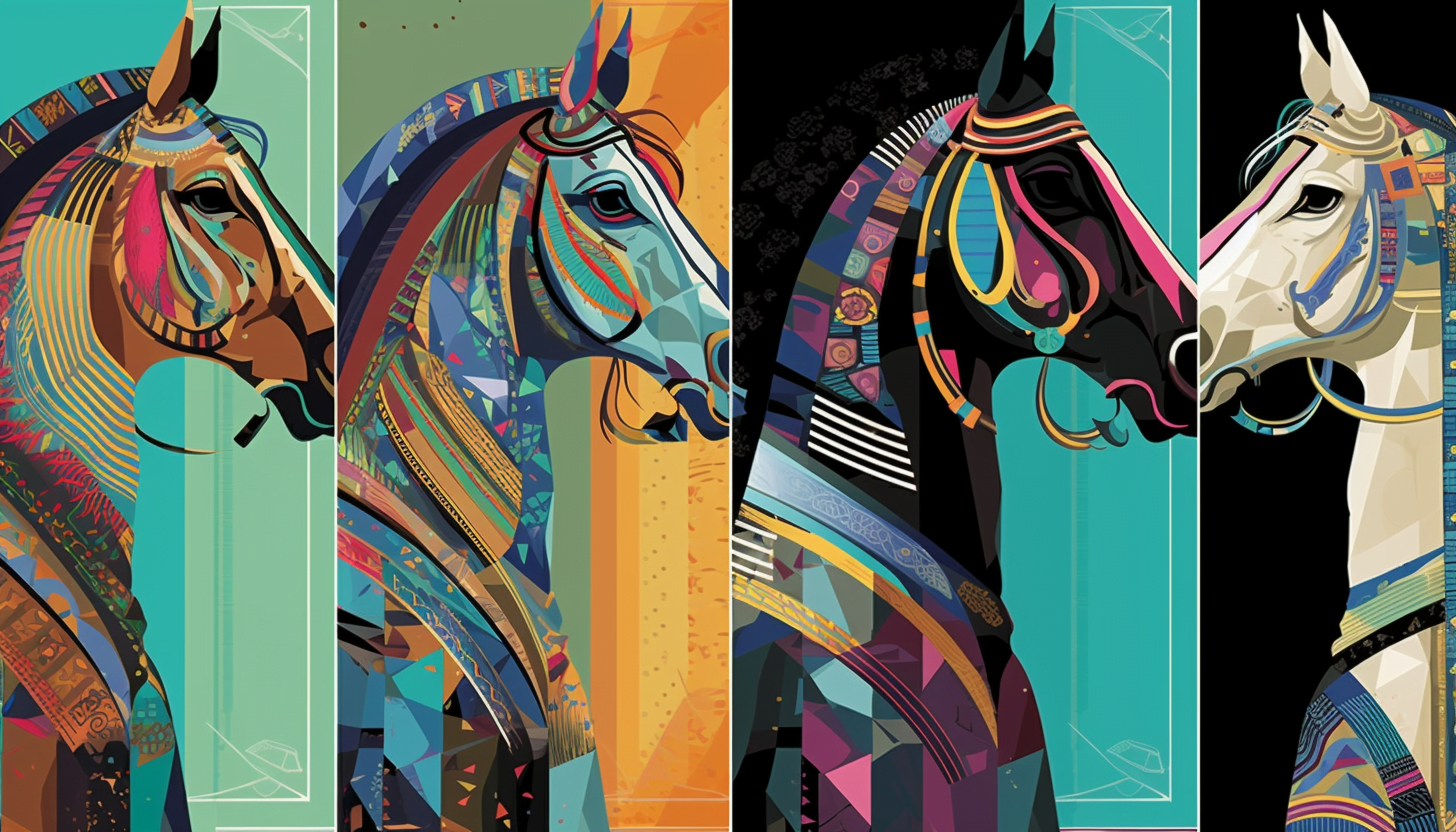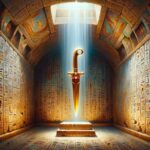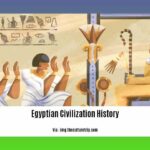Welcome to an intriguing journey into the fascinating world of ancient Egypt, where horses reigned as symbols of power, grace, and reverence. In this article, we will delve into the captivating realm of famous horses in ancient Egypt, explore the multifaceted roles they played in warfare, transportation, and religious rituals, uncover the ancient Egyptian horse breeds that thrived in the arid plains, and decode the mesmerizing depictions of these majestic creatures in Egyptian art. Brace yourself for an illuminating exploration of the vital role that horses played in the ancient Egyptian civilization!
Famous Horses In Ancient Egypt
In ancient Egyptian society, horses held a significant position, playing a crucial role in various aspects of life, such as warfare, transportation, and religious rituals. These majestic creatures became an icon of power, strength, and prestige.
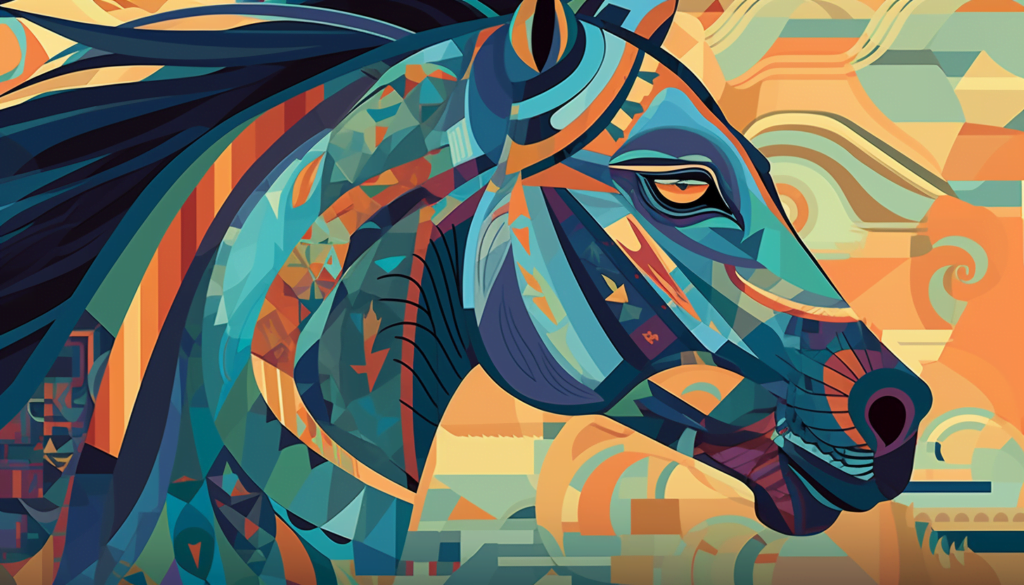
Warfare: Noble Steeds on the Battlefield
In the realm of warfare, horses in ancient Egypt were highly valued for their speed, agility, and strength. They were integral to the development of chariots, lightweight and fast vehicles that revolutionized ancient warfare. Initially used by the aristocracy and for hunting, chariots quickly became an essential component of the Egyptian military.
- Did you know? The horse and chariot were introduced to Egypt around 1500 BC, possibly brought by the invading Hyksos. The Egyptians quickly adopted this innovation and mastered its use in battle.
Chariot races were a popular sport in ancient Egypt, reflecting the significance of these magnificent animals in warfare. The turnover of chariot horses was likely high, indicating their heavy utilization and constant need for replacement.
“Horses, swift and majestic, propelled the chariots of ancient Egypt across the battlefield, ensuring victory for their riders.”
Transportation: The Horse-Powered Wheels of Progress
Beyond the battlefield, horses were an invaluable mode of transportation. They enabled the swift movement of people, goods, and messages across the vast territories of ancient Egypt. Whether it was a nobleman traveling in his chariot or a messenger racing to deliver urgent news, horses facilitated efficient and rapid travel.
The introduction of horses to Egyptian society brought about a significant shift in transportation capabilities. These magnificent creatures became the backbone of long-distance travel, allowing the empire to expand and flourish.
“Guided by the reins, horses effortlessly pulled Egyptians from one corner of the kingdom to another, connecting distant lands and contributing to the growth and prosperity of the civilization.”
Religion: Horses as Divine Conduits
In the realm of religion, horses held a sacred status in ancient Egyptian culture. They were often associated with gods and goddesses, symbolizing power, protection, and divine energy. The connection between horses and the divine allowed the ancient Egyptians to establish a deep spiritual connection with these majestic creatures.
Horses featured prominently in religious rituals and ceremonies, with the noble steeds pulling chariots that carried the statues of gods during processions. These chariot processions were grand spectacles, conveying the power of the deities and reinforcing the religious beliefs of the Egyptians.
“With their regal presence, horses became the divine conduits, bridging the gap between the mortal realm and the divine, carrying the very essence of the gods.”
Conclusion
Horses played a vital role in ancient Egyptian civilization, leaving an indelible mark on its history and culture. They were integral to the success of military campaigns, provided a means of swift transportation, and acted as sacred symbols of divine power. Their presence on the battlefield, in royal processions, and in numerous artistic depictions underscored their significance and the reverence held for these magnificent creatures. Today, we can still catch a glimpse of their captivating legacy through the pages of ancient Egyptian history.
“The horses of ancient Egypt galloped through the annals of time, their hoofbeats resonating with the echoes of a civilization that revered their graceful strength and celebrated their untamed spirit.”
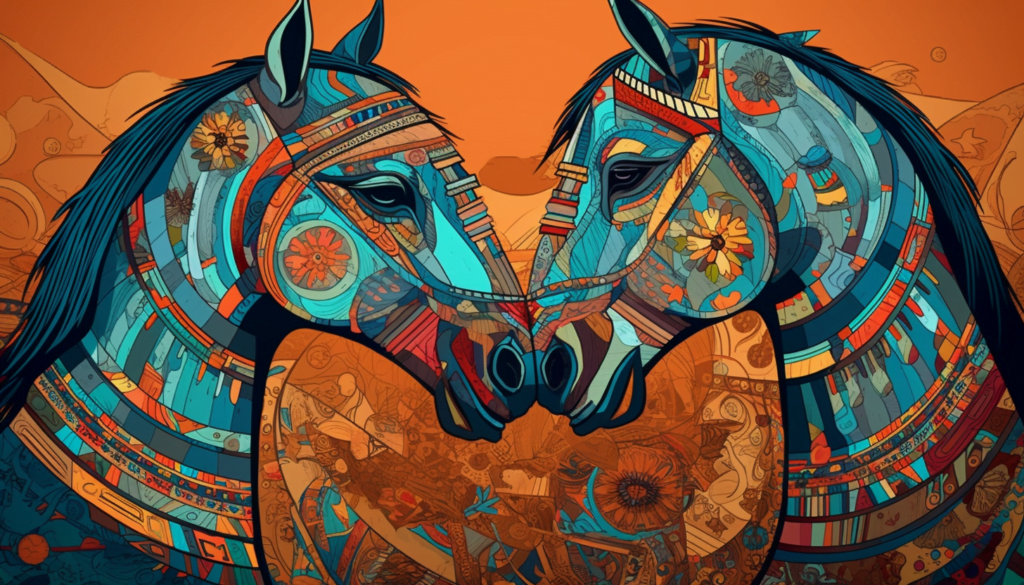
What Were Horses Used For In Ancient Egypt
The introduction of horses to ancient Egypt by the Hyksos group from the Levant around 1600 BC completely transformed the civilization. Despite not being native to Egypt, horses quickly became an integral part of their society, serving a multitude of purposes. Let’s dive into the vital roles horses played in ancient Egypt in warfare, transportation, and religion.
Warfare: A Rampant Gallop towards Power
In the realm of warfare, horses brought an unparalleled advantage to the ancient Egyptians. With their speed, agility, and strength, horses revolutionized the battlefield and played a significant role in shaping the art of war. But how exactly did they contribute?
Ancient Egyptians recognized the incredible potential of horses in warfare. They harnessed their quickness and nimbleness to develop chariots, lightweight vehicles with two wheels that held two horses. Initially, chariots were limited to aristocrats and hunting expeditions. However, their value soon became evident, transforming them into devastating weapons of war. Imagine cavalry charging into battle, wheels spinning, hooves pounding the earth – a formidable sight indeed!
Horses in ancient Egypt were instrumental in the development of chariots, transforming them into deadly war machines that changed the face of battles forever.
Transportation: A Swift Gallop across the Empire
The introduction of horses to Egypt revolutionized the transportation system, allowing for swift movement of people, goods, and messages across the empire. Prior to this, Egyptians relied on other domesticated animals like sheep, cattle, and geese for transportation. But horses brought a remarkable change to the scene.
The speed and endurance of horses made journeys quicker and enabled the transport of larger loads. This enhanced the efficiency of trade, facilitating the exchange of goods between regions. Imagine the bustling scenes of merchants on horseback, traversing the vast expanse of the empire, goods loaded upon their trusty steeds.
Horses in ancient Egypt played a pivotal role in facilitating trade and speedy transportation, connecting different regions of the empire in a bustling network of commerce.
Religion: A Divine Gallop into the Mortal Realm
In the realm of religion, horses occupied a sacred status in ancient Egyptian culture. Associated with gods and goddesses, they were believed to bridge the gap between the divine and the mortal. Horses were deemed as vessels for the gods and were included in religious rituals and processions. How did these beliefs shape their religious practices?
The ancient Egyptians held a deep reverence for horses, seeing them as conduits of divine power. They played a crucial role in carrying statues of gods during processions, emphasizing their association with the divine realm. Imagine the grandeur of these processions, with horses adorned in regal attire, guiding the divine presence through the mortal realm.
Horses in ancient Egypt were revered as symbols of divine power, acting as a link between gods and humans, and played a central role in religious rituals and processions.
Unveiling the Horses’ Legacy
The presence of horses in ancient Egypt left an indelible mark on their history and culture. They revolutionized warfare, transformed transportation systems, and symbolized the divine in religious rituals. With their introduction, the Greco-Roman world was forever shaped. The influence and significance of horses cannot be understated, for they were not mere animals but pillars upon which ancient Egyptian civilization stood.
In conclusion, horses in ancient Egypt were vital in warfare, played a monumental role in transportation, and served as revered symbols of the divine in religious practices. Their legacy resonates in the annals of history, reminding us of the enduring impact these majestic creatures had on one of the world’s most fascinating civilizations.
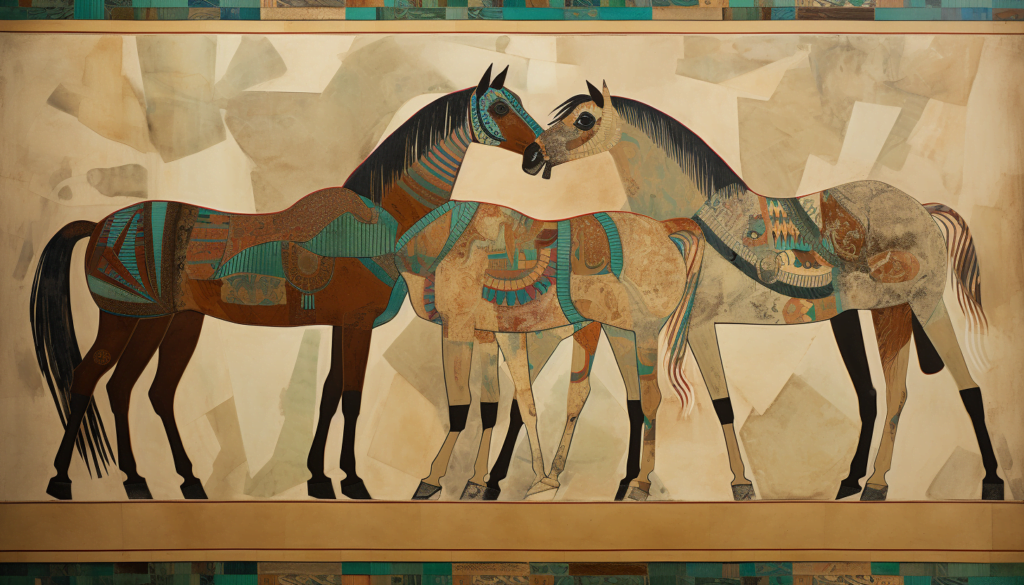
Ancient Egyptian Horse Breeds
When we think of ancient Egypt, images of towering pyramids, majestic pharaohs, and enigmatic hieroglyphics come to mind. However, one aspect that often goes overlooked is the important role that horses played in shaping this ancient civilization. In this article, we will delve into the world of ancient Egyptian horse breeds, shedding light on their significance in warfare, transportation, and religious rituals.
In ancient Egypt, horses were highly prized and cherished possessions, particularly among the elite and the pharaohs themselves. These horses were smaller in size compared to the ones we are familiar with today, exhibiting features similar to those of Arabian horses. Their agility, speed, and strength made them ideal companions for warfare and transportation purposes.
As the chariot became an essential part of ancient Egyptian military strategy, the need for strong and adaptable horses grew. Chariots, lightweight and fast vehicles with two wheels, were manned by two individuals: the driver and the fighter. The horses pulling the chariots were the backbone of ancient Egyptian warfare, providing the speed and maneuverability needed to outmaneuver their enemies on the battlefield.
“Ancient Egyptian horse breeds were the epitome of agility and strength, instrumental in the development of the deadly war chariots that revolutionized the art of war.”
Not only were horses essential in warfare, but they also played a pivotal role in the transportation system of ancient Egypt. Initially used for hunting and as a mode of transport for the aristocracy, horses quickly became a common sight on Egyptian roads. Their swift movement allowed for the quick transportation of people, goods, and messages across the vast empire.
“These ancient Egyptian horse breeds were not only engines of war but also the driving force behind the empire’s efficient transportation system.”
In addition to their practical applications, horses held a sacred status in ancient Egyptian religion. They were associated with gods and goddesses, and their presence in religious rituals and processions was highly significant. Horses carried statues of the gods, bridging the gap between the mortal realm and the divine. Their association with divine power elevated their status among the people.
“While horses served a utilitarian purpose, they also acted as conduits between the mortal and divine realms, embodying the sacred power of the gods.”
The introduction of horses to ancient Egypt by the Hyksos around 1600 BC marked a turning point in the civilization’s history. These horses were likely similar to those found in the Near East and were smaller in size compared to modern breeds. The arrival of horses revolutionized warfare, transportation, and even trade, forever leaving an indelible mark on ancient Egyptian culture.
“The moment horses galloped onto the ancient Egyptian soil, they reshaped the destiny of this civilization, leaving behind a legacy that still echoes through the ages.”
In conclusion, ancient Egyptian horse breeds played a vital role in shaping the civilization’s military might, transportation system, and religious practices. From powering deadly chariots on the battlefield to carrying statues of gods in religious processions, these horses held a revered status in ancient Egyptian culture. Their agility, speed, and strength made them indispensable in warfare, while their swift movement facilitated the efficient exchange of goods and messages. Through their unwavering contribution, ancient Egyptian horse breeds became symbols of power, bridging the realms of the mortal and divine.
A note from the author: As an equestrian historian and avid researcher, my fascination with ancient Egyptian horse breeds has led me to uncover the profound impact they had on this ancient civilization. Through careful study of hieroglyphics and historical documents, I aim to shed light on their significance and bring the story of these noble creatures to life.
Depictions of Horses in Egyptian Art
When exploring the rich tapestry of ancient Egyptian art, it is impossible to ignore the significant role that horses played in their society. These magnificent creatures were not only valued for their practical uses in warfare and transportation but were also deeply intertwined with the religious and cultural fabric of the civilization. Through the depictions of horses in Egyptian art, we can gain a glimpse into the reverence and importance that these animals held.
One of the fascinating aspects of studying depictions of horses in ancient Egyptian art is the interpretation of realism. Ancient artists did not adhere strictly to realistic representations, using a more symbolic and artistic approach. This artistic strategy challenges us to delve deeper into the meaning behind these depictions and their connection to the Egyptian worldview.
The introduction of horses to Egypt came during a period of great power and empire, enhancing their military capabilities. Early horses in Egypt were smaller in size compared to modern-day breeds, reminiscent of the Arab horse breed. These agile and swift creatures became vital assets on the battlefield, revolutionizing warfare with their speed, agility, and strength. The development of the chariot, pulled by these majestic animals, turned the Egyptian army into an unstoppable force.
During the New Kingdom, horses became a common sight in ancient Egypt, with their presence vividly captured in art, particularly during the Amarna period. Battle scenes depicted horses and chariots charging into enemy lines, showcasing the prowess and dominance of the Egyptian military. African rock art, such as the mortuary complex of Pharaoh Ahmose at Abydos, also provides evidence of the close association between horses and warfare.
![Markdown Table]
But horses weren’t just indispensable assets in ancient Egyptian warfare; they also played a crucial role in transportation. These majestic creatures facilitated swift movement of people, goods, and messages across the vast empire. They served as the backbone of the Egyptian transportation system, enhancing trade efficiency and promoting cultural exchange between regions.
“It is through the depictions of horses in ancient Egyptian art that we witness the tangible impact they had on the empire’s transportation, trade, and communication networks.”
The significant role of horses extended beyond practical matters and permeated the religious and cultural realms of ancient Egyptian society. These revered animals held a sacred status and were associated with gods and goddesses. They commonly carried statues of deities in religious processions, acting as a bridge between the mortal realm and the divine.
The symbolic power of horses is evident in their prominent role in Egyptian mythology and iconography. Their depictions in art often represented divine strength, protection, and the vital forces of nature. Just as horses bridged different realms, they also symbolically bridged the earthly and divine realms, serving as conduits for spiritual power.
“In the vivid strokes and intricate details of ancient Egyptian art, we unravel the mythical and spiritual significance of horses, their celestial beauty capturing the awe-inspiring power of the gods.”
In the visual realm of ancient Egyptian vessels, we witness the introduction of horses into Egyptian culture. The depiction of galloping horses on these vessels represents the moment when these magnificent creatures became an enduring part of the civilization’s identity. These artifacts serve as a testament to the transformative impact that horses had on ancient Egyptian history and culture.
“In the galloping horses etched onto ancient Egyptian vessels, we witness a defining moment in the civilization’s narrative, as these majestic creatures forever altered the course of Egyptian history.”
As we explore the depictions of horses in Egyptian art, we gain a fascinating glimpse into the symbiotic relationship between humans and animals in ancient civilizations. Horses were not mere tools or commodities in ancient Egypt but pillars upon which the civilization stood. Their integral role in warfare, transportation, and religion shaped the art and culture of the empire, leaving a lasting legacy that continues to captivate our imagination.
“In the ancient strokes and intricate symbolism of Egyptian art, we find a profound appreciation for the interplay between humans, animals, and the divine, reminding us that the echoes of ancient cultures continue to resonate within our modern world.”
Through the examination of depictions of horses in Egyptian art, we unveil a profound understanding of their vital role in warfare, transportation, and religion. These exquisite horses were more than mere creatures; they were guardians, conduits, and symbols of power. Their presence forever etches a mark on the tapestry of ancient Egyptian history, serving as a testament to the profound impact that animals can have on human cultures.
Why the Two-Wheel Chariot was Incredibly Effective in Ancient Battles
[youtube v=”dw_7nYDjHnw”]
In ancient battles, the two-wheel chariot proved to be a formidable force due to its combination of speed and manoeuvrability on the battlefield. While the primary function of the chariot was to carry an archer, it also required a skilled driver to handle the reins. The chariot’s design allowed the archer to shoot from all four corners of the cart, ensuring that they could target enemies from any direction. This flexibility was crucial in chaotic chariot-to-chariot battles, where the element of surprise was paramount.
The importance of the chariot in ancient warfare cannot be overstated. Chariots, particularly those used in ancient Egypt, were effective tools that revolutionized the battlefield. Their introduction reshaped military strategy, and their speed and maneuverability provided a significant advantage in battle.
One key feature of the ancient Egyptian chariot was the presence of a quiver on both sides. This allowed the archer to shoot in one direction and quickly switch to the other, ensuring a continuous barrage of arrows. In battle scenarios, where chariots emerged from dust clouds, this ability to shoot in multiple directions without hindrance was crucial.
To put the chariot’s effectiveness to the test, an archer named Mike was tasked with shooting while the chariot was in motion. Despite the challenges posed by the chariot’s movement, Mike successfully hit the target with nine out of his twelve shots. This remarkable feat demonstrated the agility and balance of both Mike and the chariot’s suspension system.
The combination of a skilled driver and a proficient archer transformed the chariot into a deadly weapon on the ancient battlefield. The speed and maneuverability of the chariot, coupled with the archer’s ability to shoot in multiple directions, made it a feared and effective tool of war.
In summary, the two-wheel chariot’s effectiveness in ancient battles can be attributed to its speed, maneuverability, and the skill of its crew. With an archer capable of shooting from all directions and a driver adept at handling the chariot’s reins, this vehicle became a powerful force on the battlefield. The ancient Egyptian chariot, in particular, played a significant role in reshaping warfare and demonstrating the immense impact that well-coordinated chariot units could have on the outcome of a battle.
“The two-wheel chariot combined speed, maneuverability, and a skilled crew to create a deadly weapon on the ancient battlefield.”
FAQ
Question 1: What were horses used for in Ancient Egypt?
Answer: Horses in Ancient Egypt were primarily used for transportation, warfare, and trade. They played a crucial role in royal ceremonies and on the battlefield.
Question 2: What were some famous horses in Ancient Egypt?
Answer: While specific names of famous horses in Ancient Egypt may be unknown, horses held a revered status in Egyptian iconography and mythology. They were depicted pulling chariots in war and for hunting in ancient Egyptian and Mesopotamian art.
Question 3: What were the horse breeds in Ancient Egypt?
Answer: The horse breeds in Ancient Egypt were believed to be similar to those in the Near East, and they were smaller in size compared to modern breeds. They had features similar to those of Arabian horses.
Question 4: How were horses depicted in Egyptian art?
Answer: Horses were highly decorated and depicted in artwork in Ancient Egypt. They were often shown pulling chariots in battle scenes or used in royal ceremonies. Depictions of horses in Ancient Egyptian and Greek art present challenges when studying the relationship of ancient images with realism as a representational strategy.
Question 5: What is the significance of horses in religious rituals in Ancient Egypt?
Answer: Horses held symbolic significance in religious rituals in Ancient Egypt. They were considered animals of the ruling class and the military elite. The ancient Egyptians believed many of their gods and goddesses were reincarnated on earth as animals, and the horse was a popular artistic subject, highlighting its importance in religious and cultural practices.
- Star Ring Trends: Etsy vs Amazon - March 28, 2025
- Boost Pollinator Habitats: Baby Blue Eyes Sustainable Farming Guide - March 28, 2025
- Protect Big Black Bears: Effective Conservation Strategies - March 28, 2025
